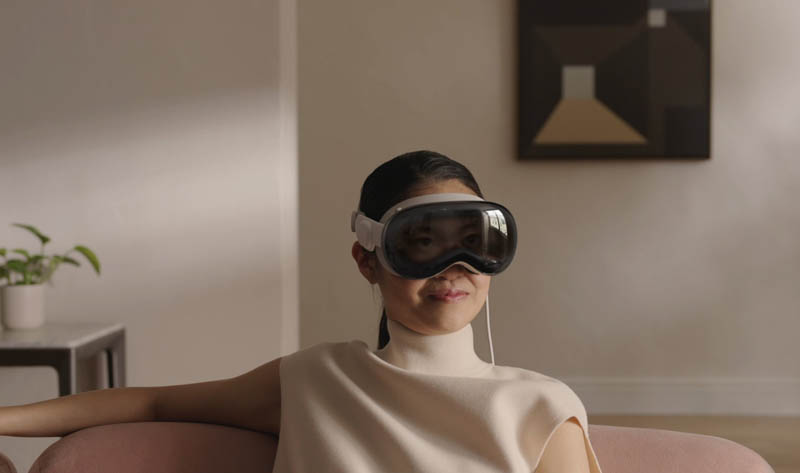At the WWDC23 opening keynote, Apple unveiled the highly anticipated Apple Vision Pro XR headset, marking their grand entrance into the realm of XR (Extended Reality). Let’s dive into how the Vision Pro, combined with consumer-level products, could revolutionize our everyday lives.
Priced at a whopping $3,499, the Vision Pro is equipped with the M2 + R1 dual chip and supports EyeSight bidirectional perspective. Though Apple remained tight-lipped about the lens technology, the size suggests that the Vision Pro likely employs the industry-standard Pancake optical solution to slim down the device.
Seamless switching between the virtual and real worlds is the holy grail for XR manufacturers. Vision Pro takes this a step further by enabling users to project their real-world image into the virtual world through the Persona function, enhancing the connection between reality and virtuality.

A Controversial Design Choice
The split battery design in the Vision Pro has sparked some debate. While it undoubtedly reduces the weight on the user’s head, there’s no one-size-fits-all solution for battery placement in XR devices. Meta, for instance, integrates the battery into the headset for easier rear strap replacement, Meta Quest 3 VR Headset: Next-gen Snapdragon chip, but this can become uncomfortable during extended use. PICO opts for balancing the battery with the headset to optimize comfort.
Each approach has its merits, and it’s hard to pinpoint the best one. Apple’s Vision Pro seems to prioritize minimizing weight for maximum comfort, whereas Meta and PICO 4 Pro focus on ensuring the integrity of their all-in-one machines.
Paving the Way for the XR Consumer Market
Apple’s entry into the XR market could be seen as laying the groundwork for the future. By providing Vision Pro for developers, they can enrich the software ecosystem in advance before releasing XR devices for the average consumer, making XR technology more accessible.
Will our office environment transition from flat to spatial computing within the next two years? It’s difficult to say if this will happen in the next five years, but until then, augmented reality might not be a necessity for enhancing work efficiency.

Apple’s Touch on Vision Pro
As a mixed reality head-mounted device, the Vision Pro showcases some impressive details in terms of wearing comfort, visual assistance for nearsighted users, and screen and sensor stacking. From the design of the head fixing strap and the facial light-blocking sponge with memory foam characteristics to the display accuracy of over 4K in one eye, Apple’s trademark attention to detail is evident.
Vision Pro seems to prioritize lightweight wearability, even requiring a wired connection to an external power source when unplugged to reduce the head-worn portion’s weight. However, Apple’s demonstration clips predominantly feature indoor use, suggesting that the device is primarily intended for indoor activities. We can’t help but hope that someday, Apple Glasses will achieve the comfort and seamless wearability of regular glasses, evolving into a device that can truly be worn outside the home.
WWDC23 Editor Picked:
Apple Unveils the Vision Pro: A Game Changer in Spatial Computing
Apple iOS 17 With New Features and Changes to Communication and Collaboration
Apple Watch Takes Health to the Next Level with watchOS 10!
Unlocking iPadOS 17: Personalized Lock Screens, Interactive Widgets, and More
Apple macOS Sonoma Update Interactive Desktop Widgets, Safari, Video Conferencing